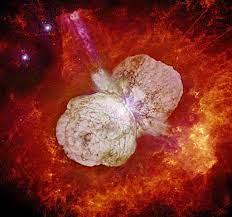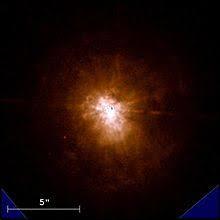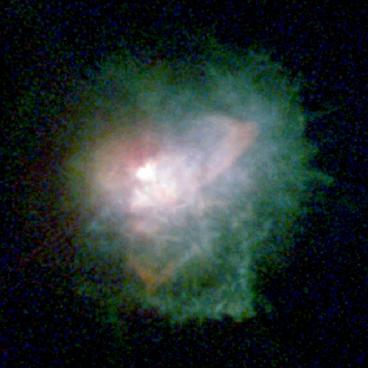Research
Roberta Humphreys' studies of “Luminous Stars in Nearby Galaxies” (Papers 1 – VIII) demonstrated the existence of an empirical upper luminosity boundary in the HR Diagram and by implication an upper limit to the masses of stars that could evolve to become red supergiants (Humphreys & Davidson 1979). This upper limit, sometimes called the Humphreys-Davidson limit, was not predicted by theory and greatly influenced future work on massive star evolution. They suggested then and in two subsequent papers (1984, 1994) that massive stars above this limit encountered an instability, possibly due to the opacity-modified Eddington limit, and experienced high mass loss episodes which prevented their evolution to cooler temperatures. The Luminous Blue Variables (LBVs) and stars like eta Car are examples of this high mass-loss phase. As part of this work, she also obtained the first spectra and IR photometry of individual stars outside the Local Group (Read more).

In recent years, she has used the HST to study individual evolved, cool stars that define this upper luminosity limit, the cool hypergiants. Using high-resolution spectroscopy and multi-epoch imaging, she has found that some of these stars experience localized high mass-loss events due to large-scale surface and convective activity (Read more).
The warm and cool hypergiants represent a very short-lived evolutionary stage, characterized by high mass loss and eruptive events. Many of them are strong infrared sources and powerful OH masers. The intermediate temperature or warm (yellow) hypergiants and the most luminous cool or red hypergiants are examples of high mass loss events in the evolved post-main sequence massive stars most likely with initial masses above 20 - 25 Msun. The warm hypergiants with their very high mass-loss rates, circumstellar nebulae, and dusty environments are excellent candidates for post-red supergiant evolution.


The extreme red hypergiant VY CMa and the post RSG warm hypergiants IRC +10420 and Var A in M33 are prime examples. Recent work on VY CMa with Keck and HST, revealed several high mass loss ejections over the past 800 years. The most recent correspond to periods of variability and deep minima in its historic light curve in the 19th and 20th centuries. The similarity with the recent dimming of Betelgeuse, a more typical red supergiant, suggests that gaseous outflows from an active surface are a major contributor to the mass loss of red supergiants.
These results were selected for a press release from NASA.
The published paper was selected for the AAS Journals Authors Series on youtube.
She also led the Minnesota Automated Plate Scanner (MAPS) project for nearly 20 years. One of their major activities was the digitization of the POSS I and creation of the on-line database. The MAPS group was the first to use neural networks for object classification. She and her students (Larsen, Parker and Cabanela) have used the database for large scale studies of the Milky Way.